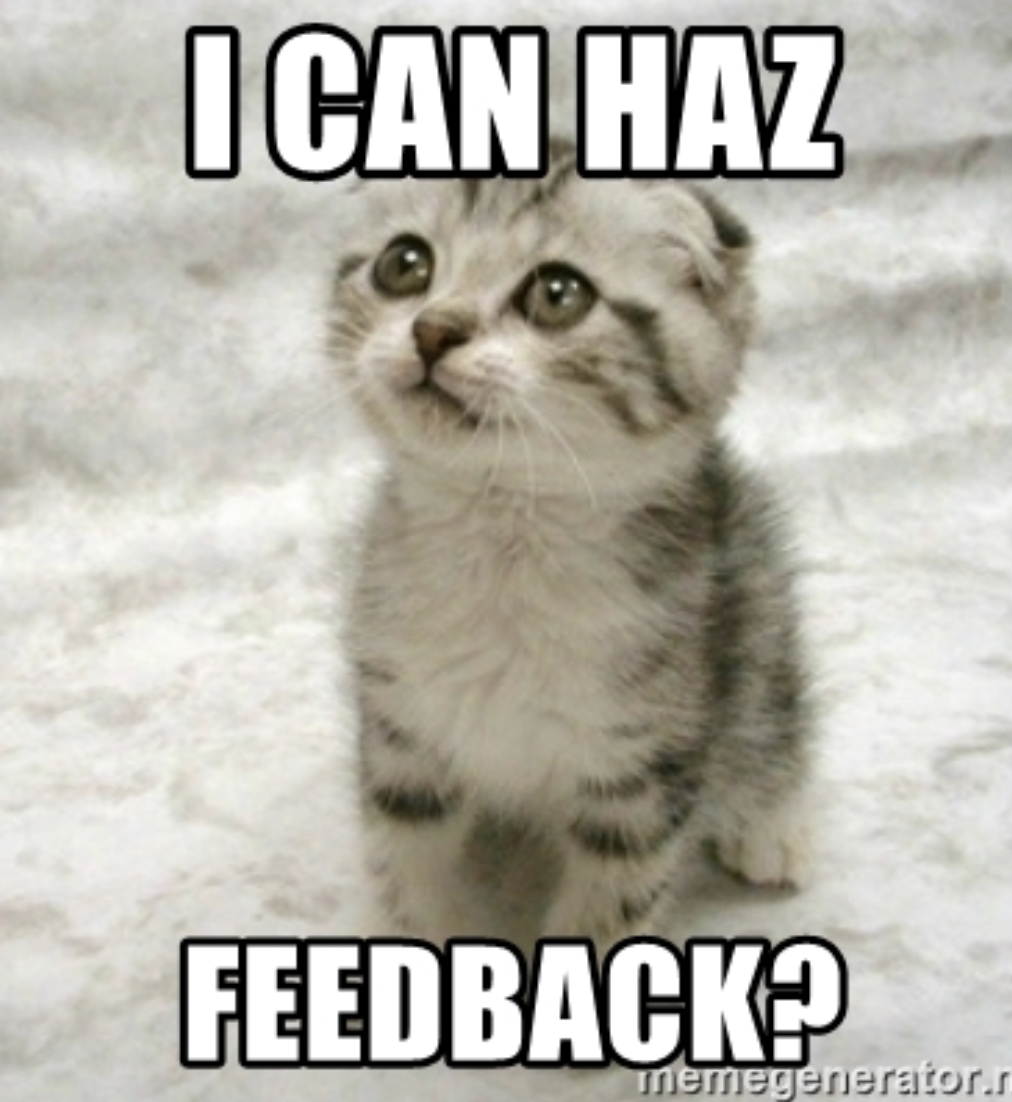
Scenario 1: it’s 9.55 am, you are about to enter a meeting and a teammate comes to you to talk about this tough discussion you had last week. The discussion is rushed and didn’t really go well. Now, you will think about it during the meeting instead of focusing on the topic.
Scenario 2: you book a meeting with a colleague to talk about something that bothers you. You have a last-minute work to do and don’t have the time to prepare the discussion. Nevermind, you still go but then regret your words as soon as you have finished the discussion with them as you didn’t prepare well.
Have you ever been in one of these situations? Most likely yes.
🤟 Knowing how to give or receive feedback is very important. Even in personal life feedback is everywhere. As testers, it is even more important as we give feedback all the time: bug reports, suggest improvements, etc.
Definition
“Helpful information or criticism that is given to someone to say what can be done to improve a performance, product, etc.” Source
Types of feedbacks
Depending on the type of feedback, it will be more or less easy to receive and give it. Being aware of the types is a first step to thinking about how to approach it.
Constructive
- Usually stating observations (good or bad), keeping an encouraging tone;
- Example: when we find a bug for the 1st time and report it to the developer.
Evaluation
- Usually used to explain to the person receiving it where they stand on expectations. It can be reassuring or challenging;
- Example: quality retrospective with the developers, showing the sprint report.
Adjusting
- Usually given when things are not up to the standards. It is directive, structured, and most of the time a tough time for the receiver;
- Example: when we find a bug for the 10th time and we expect a change.
Appreciation
- To show appreciation, something we liked. Usually, an encouragement to keep on doing something;
- Usually easy to receive, it triggers happy emotions.
💁♂️ 💁♀️ Giving feedback
The reasons
There are good and bad reasons to give feedback. Before you give yours, consider it:

How to give feedback
Once you have assessed that your intentions are good, you can start thinking about giving it.
Before giving feedback, prepare what you will be talking about. Find specific examples that you will talk about.
Then find the right time: it’s important to connect 1st. Is the person available? Do they have the time right now to speak?
Once you have assessed it’s the right timing, make sure you focus on giving feedback about the facts, not the person. If you know it will be difficult to hear/read, make sure you phrase it appropriately. All feedback can be given, as long as it is not personal or aggressive.
Adapt the way you talk depending on the person: some people will like to be straightforward and will be pumped (even if negative), others will be too discouraged if it is only negative and will just give up.
In the end, offer support.
Guideline for a conversation
- Timing check
- Context & impact
- Expectations
- Request
- Check
- Closing
- Hi! Do you have a few minutes?/ Is it the right time to have a chat?
- I’d like to talk to you about … because…
- It makes me/the team feel…
- I would like/ I need…
- Do you see what I mean?
- I hope you understand where I’m coming from. Let’s discuss what we can do next…
🙆♂️ 🙆♀️ Receiving feedback

We receive feedback all the time. Whether it is from our colleagues, our family members, or even our pets!
For a lot of us, receiving feedback is a sign of something bad coming, of something tough that we will have to listen to, or something positive that will make us blush.
🌱 However, like this kitten, asking for feedback will make us grow.
In order for it to be constructive, it’s important to:
- Acknowledge if it’s the right timing, or not;
- Listen with the intention of not replying straight away;
- Be open;
- Rephrase if you think it is necessary;
- Evaluate if the situation needs an answer or not. If unsure, you can always ask the person “do you wish me to answer? Or it was just to share?”
- Decide what to do: do I want to act on it, or not
Feedback is a 2-way thing

Careful as misinterpretations are at the center of misunderstandings and frustrations. A (very simple) example would be:
- A: Hi! Do you have 5 minutes? I wanted to tell you how I loved your presentation, it was very interesting and I understand more what to do in this situation
- B: Thanks (with a flat tone of voice, as embarrassed to receive a compliment)
- A: …
- B: I got to go
In this example, B is overwhelmed by the comment and is not showing how they feel about it. A might think that their comment was misplaced and feel also embarrassed about it, and so next time will not share.
A could have answered: “Thanks, I appreciate you taking the time to tell me”. Both are most likely to leave this conversation with a smile and be willing to share next time.
Talking about how you feel about the feedback can help to bond and adapt for the next time a similar situation happens.
Feedback is part of our everyday life. It is very important to be aware and to practice it often, to adapt it to the people we live and work with.
In any case, remember: honesty always wins.
Good luck and enjoy it! It’s amazing what we can do once we improve our group communication 🙌



